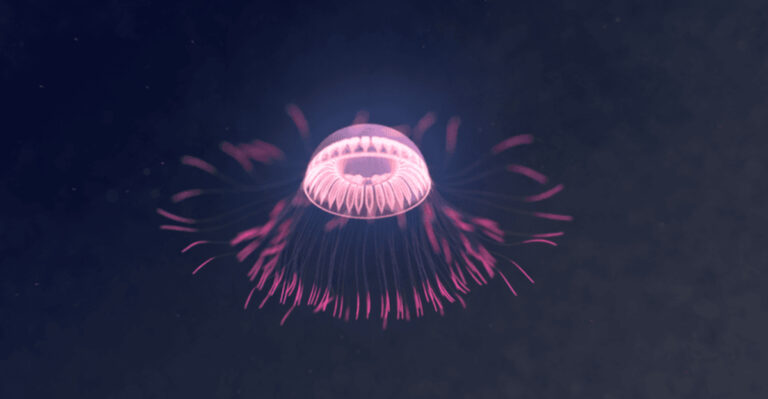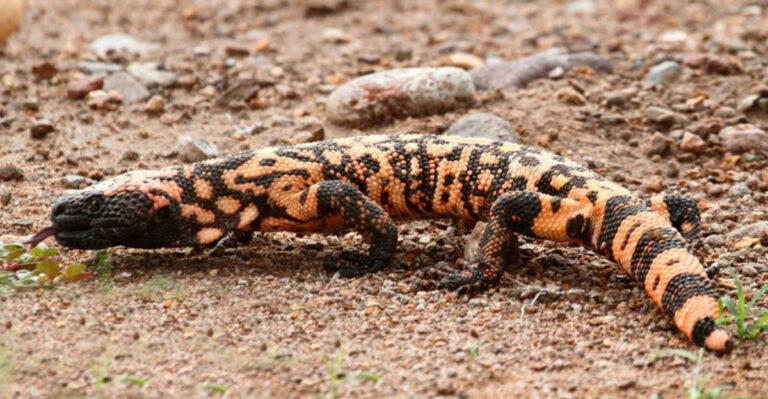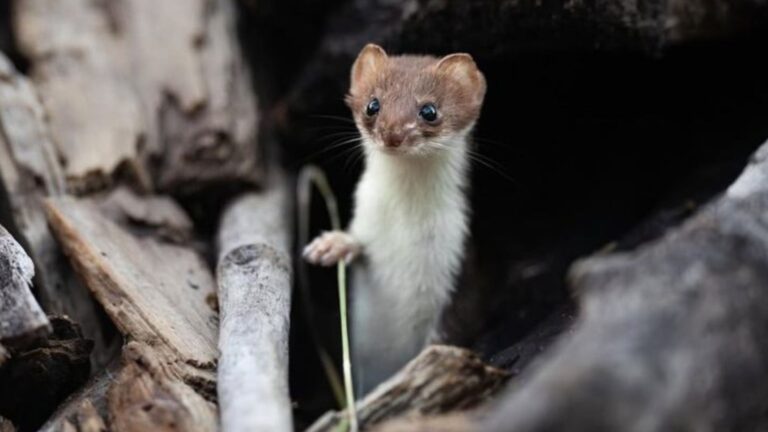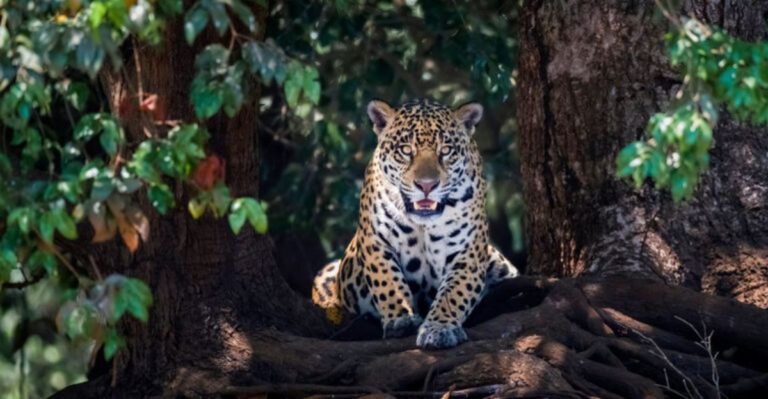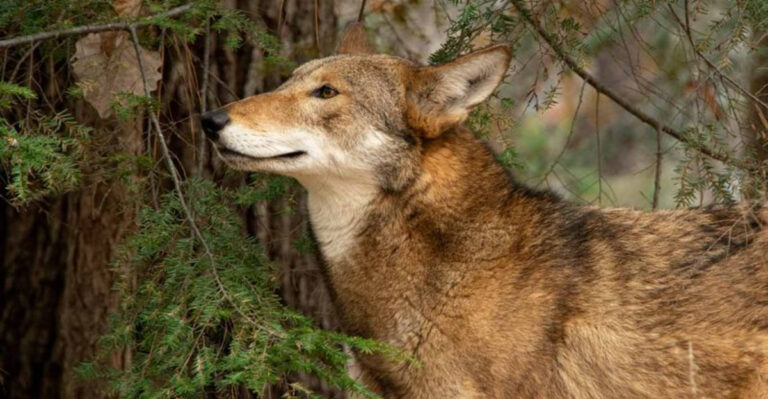15 Friendly Pet Frogs That Are Surprisingly Easy To Care For
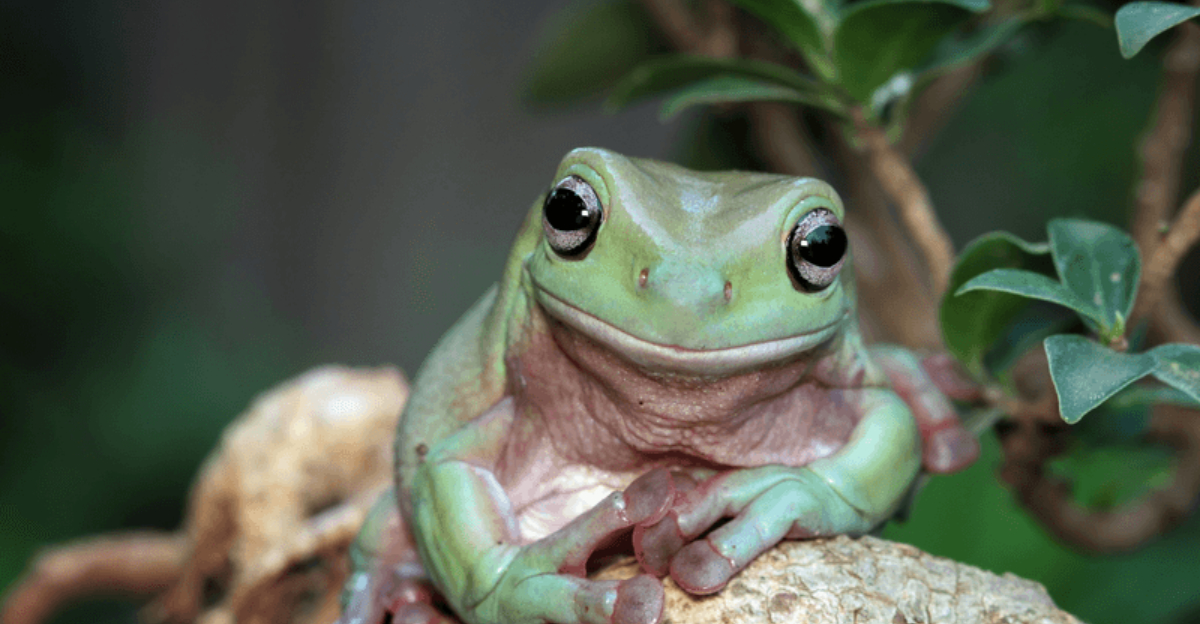
Frogs make fascinating pets for both beginners and experienced amphibian enthusiasts. These charming little creatures come in a rainbow of colors and have unique personalities that can brighten your day.
If you’ve been considering an unconventional pet that doesn’t demand constant attention, a pet frog might be the perfect addition to your home.
1. White’s Tree Frog
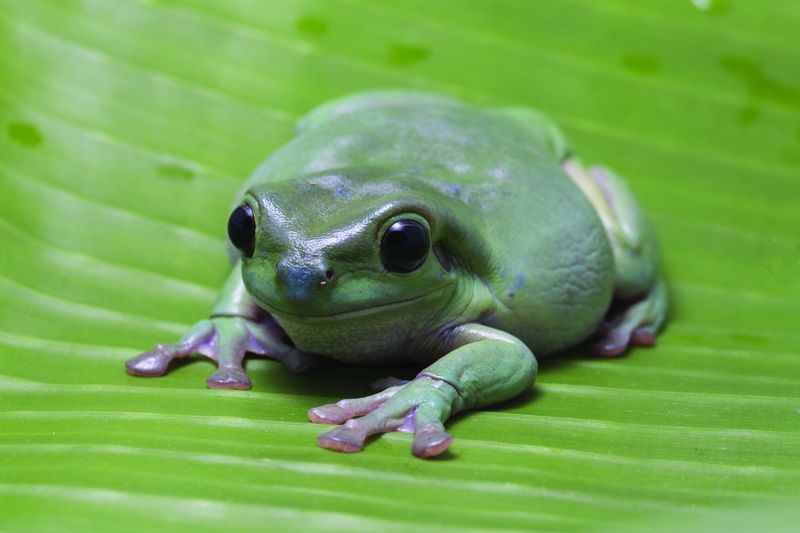
Chubby-cheeked and perpetually smiling, White’s Tree Frogs have earned the nickname ‘dumpy frogs’ due to their adorably plump appearance. Native to Australia, these docile amphibians grow to about 4 inches and can live up to 16 years with proper care.
Setting up their habitat requires minimal effort – a vertical terrarium with some climbing branches, a water dish, and tropical plants will make them feel right at home. They thrive at room temperature and don’t need special lighting.
Their gentle temperament makes them perfect for handling (with moistened hands), and they quickly recognize their owners, sometimes even climbing to the top of the tank when you enter the room!
2. Pacman Frog
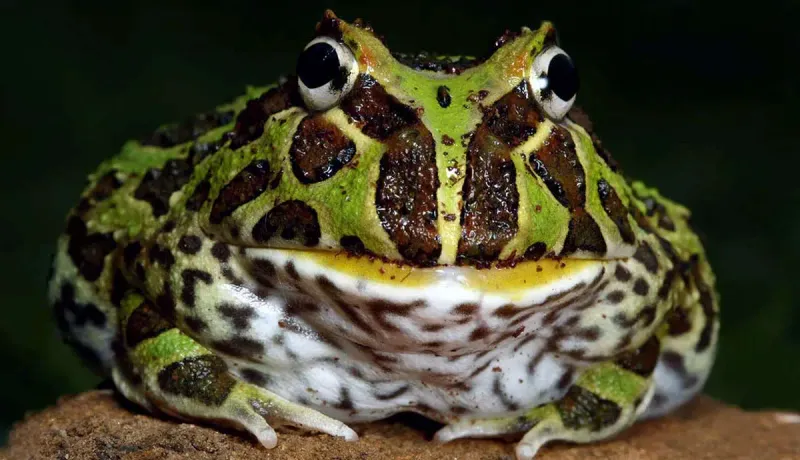
Named for their uncanny resemblance to the video game character, Pacman Frogs are basically living potatoes with attitudes. These round-bodied frogs from South America spend most of their time partially buried, waiting for food to pass by their impressively wide mouths.
Unlike many frogs requiring complex habitats, Pacmans need just a simple terrarium with a few inches of coconut fiber substrate, a shallow water dish, and a hiding spot. They’re perfectly content living in a 10-gallon tank their entire lives.
While not particularly active, their fascinating feeding response makes them entertaining to watch – they’ll lunge with surprising speed at crickets, making them disappear in the blink of an eye!
3. African Dwarf Frog
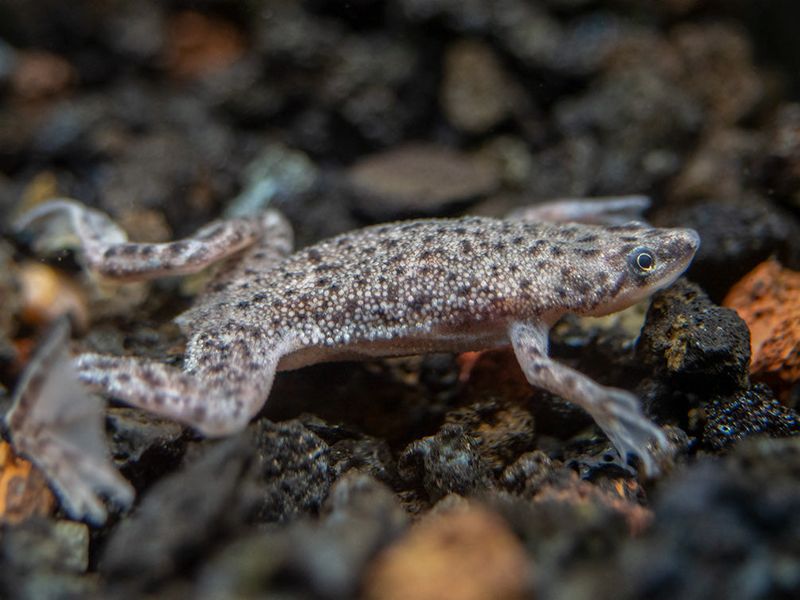
Tiny dancers of the aquatic world, African Dwarf Frogs rarely grow larger than 1.5 inches. These fully aquatic creatures perform adorable underwater ballet moves, floating up and then drifting down with spread limbs that make them look like they’re dancing.
Living entirely underwater means you can keep them in a simple aquarium with gentle filtration and some hiding places. No special heating is required as long as your home stays between 68-78°F. Feed them every other day with specialized frog pellets or frozen bloodworms.
Social by nature, these frogs thrive in small groups and can peacefully coexist with non-aggressive fish. Their antics – from synchronized swimming to sudden sprints to the surface for air – provide endless entertainment.
4. Fire-Bellied Toad
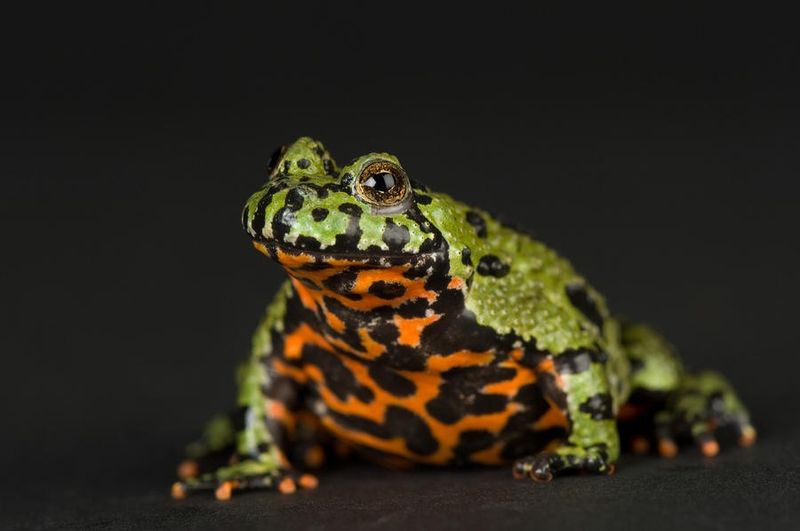
Sporting a brilliant red-orange underside that flashes warnings to predators, Fire-Bellied Toads combine striking looks with hardy constitutions. When startled, they flip onto their backs in a dramatic defense posture called the ‘unken reflex,’ showing off their vibrant bellies.
Half-aquatic habitats are easy to create with a split tank design – half land, half shallow water. Room temperature works fine, and they eat standard pet store insects like crickets and mealworms.
These social amphibians actually do better in small groups where they’ll call to each other with pleasant bell-like sounds. Remarkably long-lived for small amphibians, they often reach 12-15 years in captivity, making them companions for more than just a season or two.
5. Gray Tree Frog
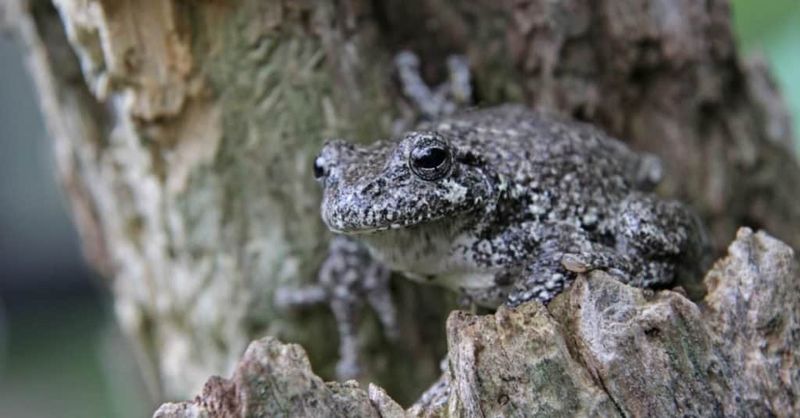
Masters of camouflage, Gray Tree Frogs can change color from gray to green depending on their surroundings and mood. These native North American frogs possess remarkable suction-cup toes that allow them to climb glass walls and cling to vertical surfaces with ease.
Their care remains straightforward – a vertical terrarium with branches, plants, and a small water dish creates the perfect home. Since they’re native to temperate regions, they don’t need tropical temperatures or specialized lighting systems that more exotic species require.
Evening brings out their melodious trilling calls, especially during spring and summer months. Unlike many pet frogs that remain hidden, Gray Tree Frogs often perch visibly on branches or glass walls, making them engaging pets you’ll actually see enjoying their habitat.
6. Red-Eyed Tree Frog
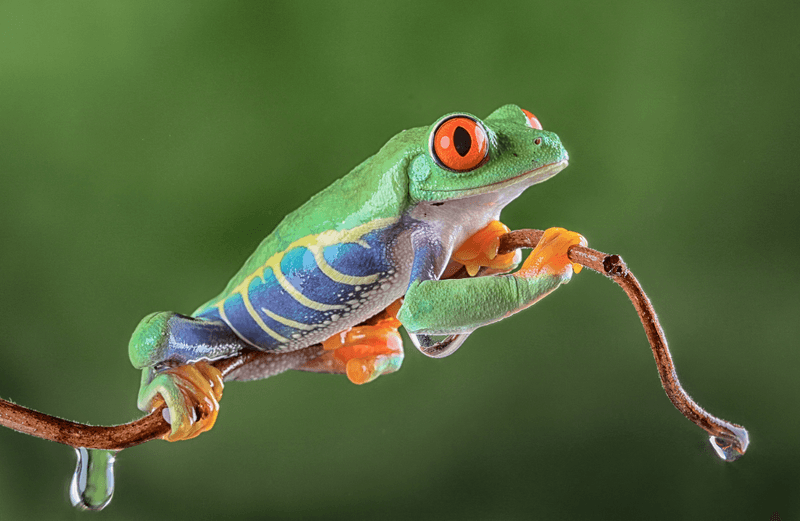
Poster children of the rainforest, Red-Eyed Tree Frogs sport vibrant green bodies, blue-and-yellow striped sides, and those unmistakable ruby-red eyes. Despite their exotic appearance, they’re surprisingly straightforward to maintain once their enclosure is properly set up.
Their care centers around maintaining humidity rather than complex feeding or water quality management. A simple misting system and live plants keep humidity high, while their diet consists of readily available crickets and other small insects.
They’re primarily nocturnal, so watching them become active as evening falls adds a magical element to your day. Though they prefer being admired rather than handled, their bold colors and animated nighttime activities make them living art pieces that bring tropical vibrancy to any room.
7. American Green Tree Frog
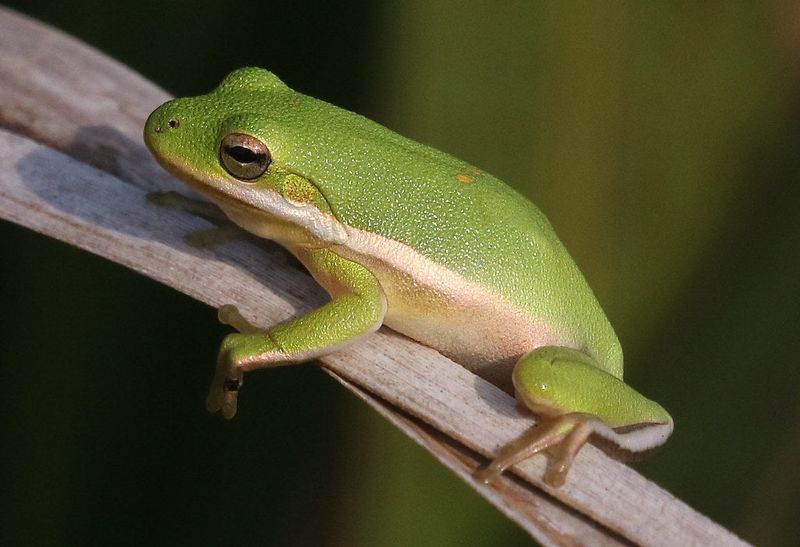
Bright lime-green with cheerful white racing stripes along their sides, American Green Tree Frogs bring a splash of color and personality to any home. These native amphibians are small enough to thrive in modest terrariums yet vocal enough to make their presence known with their distinctive nighttime croaking.
Setting up their habitat requires minimal special equipment – just a vertical terrarium with some branches, live or artificial plants, and a shallow water dish. They tolerate a wide temperature range (65-85°F) without needing special heaters or lights.
Naturally curious, these little frogs often press their faces against the glass when you approach, seemingly as interested in watching you as you are in watching them. Their gentle temperament makes them perfect for frog enthusiasts of all experience levels.
8. Tomato Frog
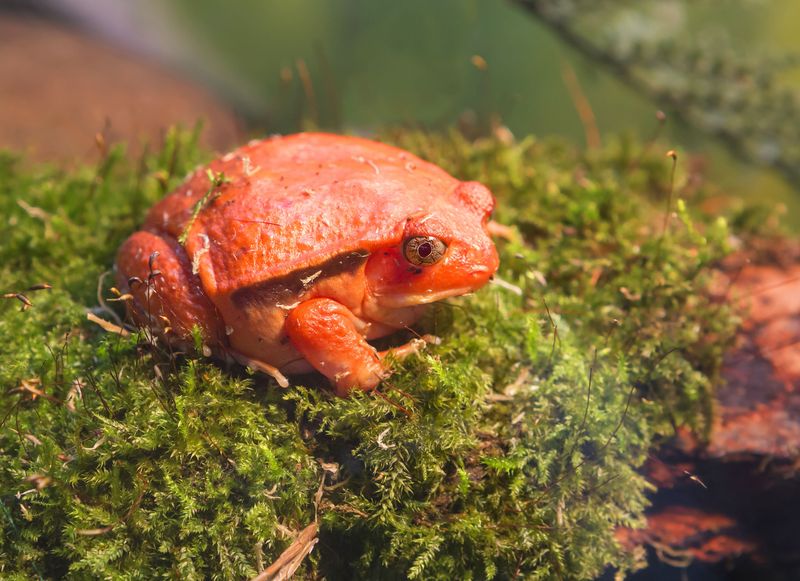
Round and brilliant red like their namesake fruit, Tomato Frogs make striking pets that don’t demand complicated care. Female frogs display the brightest tomato-red coloration, while males tend toward a more orangish hue – both equally eye-catching in a simple terrarium setup.
These ground-dwelling amphibians from Madagascar prefer a horizontal tank with several inches of coconut fiber substrate for burrowing. Their care routine consists mainly of keeping their substrate slightly damp and offering crickets or other insects a few times weekly.
When startled, Tomato Frogs secrete a sticky white substance that deters predators – a fascinating defense mechanism that reminds us of their wild nature. Despite this quirk, they’re generally undemanding pets that can live 6–8 years with basic care.
9. Cuban Tree Frog
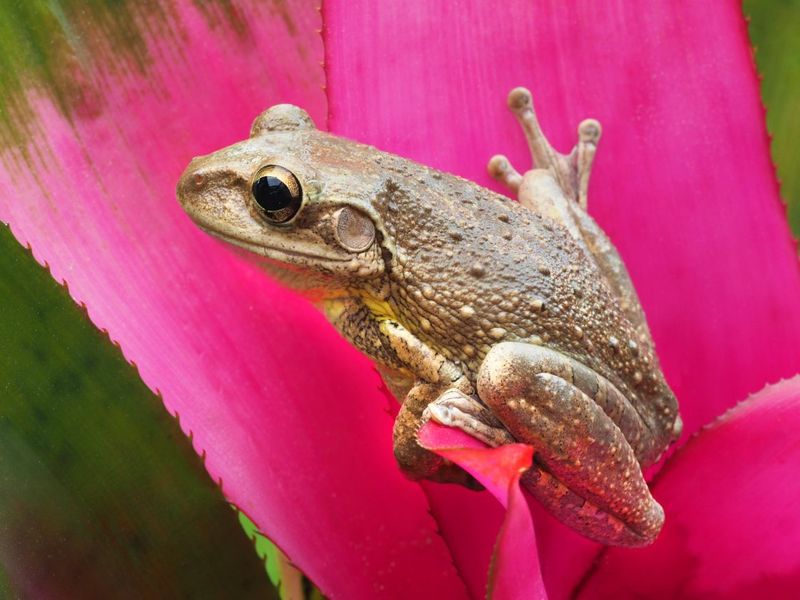
Adaptable survivors with chameleon-like color-changing abilities, Cuban Tree Frogs can shift from creamy white to dark brown depending on temperature, mood, and surroundings. These larger tree frogs (reaching up to 5.5 inches) possess remarkable climbing abilities thanks to their oversized toe pads.
Their habitat needs to remain minimal – a vertical terrarium with climbing branches and a water dish fulfills their basic requirements. Cuban Tree Frogs aren’t picky eaters, readily accepting crickets, roaches, and even small fish, making feeding time uncomplicated.
Natural problem-solvers, these intelligent amphibians quickly learn to follow routines and may even recognize their caretakers. Their adaptability to various conditions makes them ideal for beginners who might not maintain perfect environmental parameters 100% of the time.
10. Leopard Frog
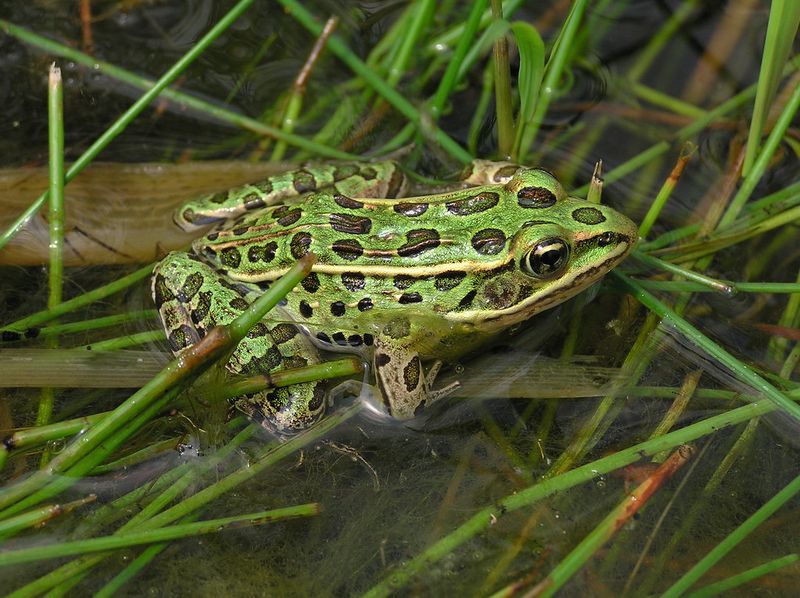
Speckled with distinctive dark spots across their green or brown bodies, Leopard Frogs look like they’re wearing natural camouflage. These active jumpers bring the spirit of North American ponds into your home without demanding specialized care.
Half-terrestrial and half-aquatic, they thrive in terrariums with both land areas and a shallow water section. Room temperature suits them perfectly, and they eagerly consume crickets, worms, and other small insects available at any pet store.
Unlike some pet frogs that hide constantly, Leopard Frogs remain visible and active during daylight hours, making them engaging pets you’ll actually see exploring their habitat. Their natural curiosity and animated movements create an ever-changing display that’s more entertaining than many television shows!
11. Desert Rain Frog
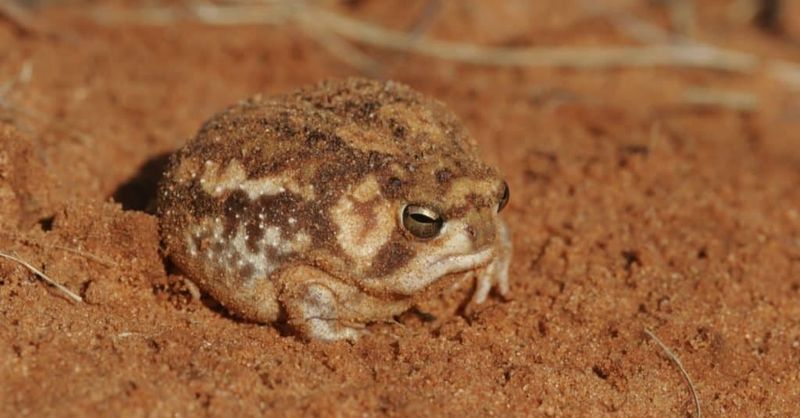
Famous for their squeaky toy sounds that went viral online, Desert Rain Frogs pack enormous personality into tiny, round bodies. These unusual amphibians from southern Africa have adapted to sandy environments with their chubby, potato-like shape and stubby limbs designed for digging rather than jumping.
Their habitat requirements break typical frog-keeping rules – they need a sandy substrate several inches deep for burrowing, with moderate rather than high humidity. No water dish is necessary; they absorb moisture through their skin from damp sand.
What makes these frogs particularly appealing is their comical appearance and adorable defensive squeak when disturbed. While not as commonly available as some pet frogs, their growing popularity means more breeders are working with this charming species.
12. Amazon Milk Frog
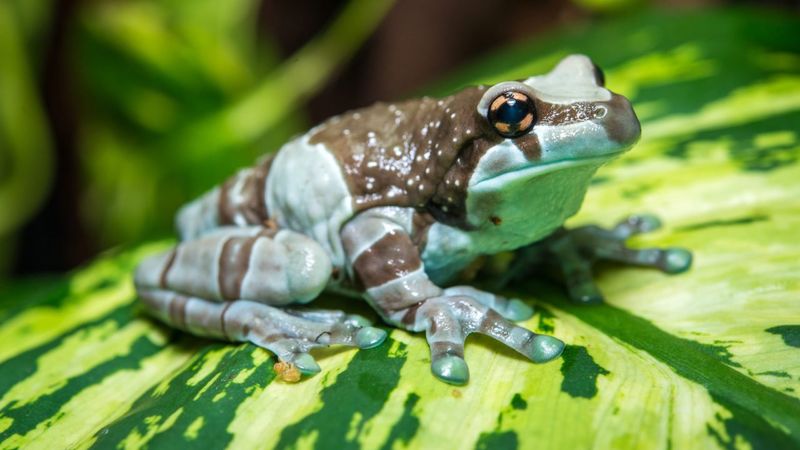
Wearing a striking black-and-white pattern that transforms as they age, Amazon Milk Frogs start life as blue-tinted tadpoles before developing their signature zebra-like stripes. Named for the milky secretion they produce when stressed, these medium-sized tree frogs from South America combine exotic looks with surprisingly straightforward care.
Their vertical terrarium needs just a few key elements: climbing branches, broad-leaved plants for perching, and a shallow water dish. Standard room temperature works well, though they appreciate a slight temperature drop at night.
Social by nature, Milk Frogs do well in small groups where they’ll pile on top of each other in amusing frog stacks. Their calm temperament makes them suitable for occasional gentle handling, though their skin secretions mean you should always wash your hands afterward.
13. Oriental Fire-Bellied Toad
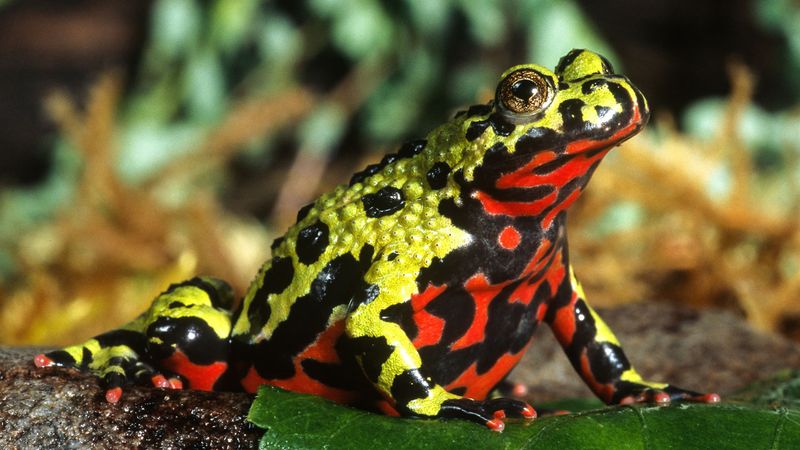
Sporting an electric-green back contrasted against a fiery red-orange belly, Oriental Fire-Bellied Toads bring dramatic coloration to beginner-friendly amphibian care. When threatened, they perform their signature ‘unken reflex’ – arching their backs and showing their vibrant bellies as a warning display.
Creating their habitat feels like building a miniature landscape with half land, half shallow water. They don’t require heating if kept at normal room temperature, and they eagerly accept standard pet store insects like crickets and mealworms.
Among the most active of pet amphibians, these social creatures spend daylight hours swimming, exploring, and interacting with tankmates. Their bold personality extends to feeding time, when they enthusiastically pounce on prey with surprising speed and accuracy.
14. Vietnamese Mossy Frog
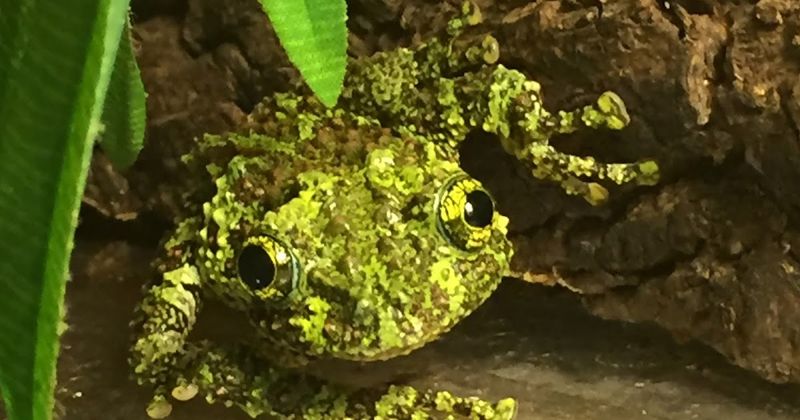
Nature’s master of disguise, Vietnamese Mossy Frogs look remarkably like clumps of moss with their textured, green-and-brown mottled skin. These unusual amphibians can tuck their limbs close to their bodies and become nearly invisible among real moss and plants in their enclosure.
Despite their exotic appearance, they require similar care to other tree frogs – a vertical terrarium with climbing opportunities and high humidity. They’re not particularly active during daylight hours, preferring to remain motionless in their camouflaged state.
The evening reveals their true nature as they begin exploring and hunting. Their remarkable ability to mimic their surroundings makes finding them in their terrarium an entertaining daily challenge – sometimes they’ll be right in front of you, yet completely overlooked until they move!
15. Blue Poison Dart Frog
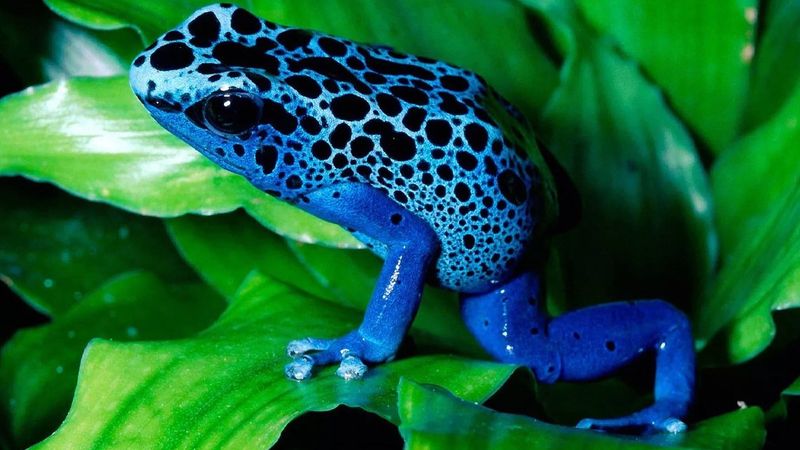
Electric-blue jewels that fit in your palm, captive-bred Blue Poison Dart Frogs lose their toxicity in captivity while keeping their stunning color. Unlike their wild counterparts that derive toxins from their natural diet, these captive frogs pose no danger when properly housed and handled minimally.
Their terrarium setup focuses on maintaining high humidity with a naturalistic approach – live plants, leaf litter, and a shallow water feature create their ideal environment. Feeding them specialized fruit flies and small insects constitutes the most technical aspect of their care.
Surprisingly bold for their tiny size (1-2 inches), these frogs remain active during daylight hours, hopping confidently around their habitat rather than hiding. Their brilliant coloration, combined with their diurnal nature, makes them living art that you’ll actually see enjoying their miniature rainforest.

